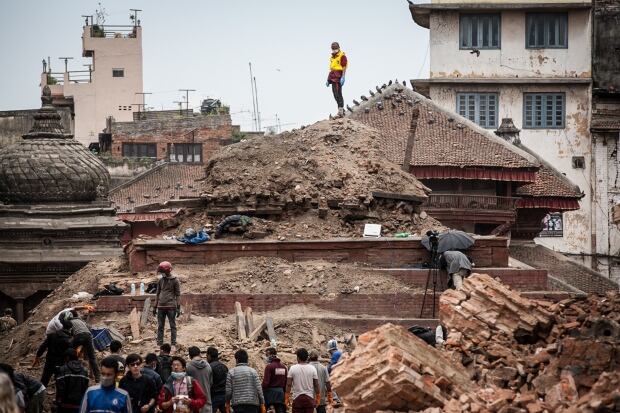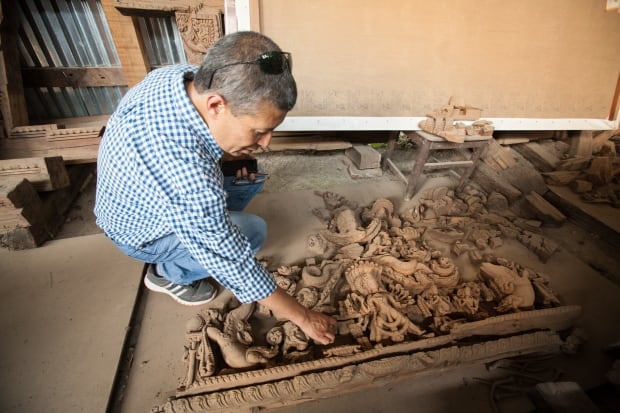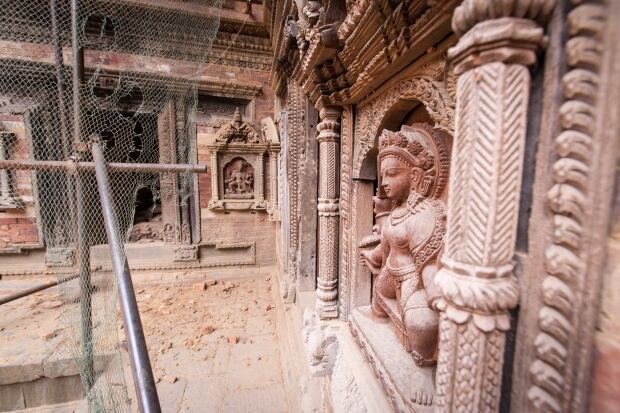When the 7.8 magnitude earthquake shook Nepal on April 25, 2015, it also struck at the world's cultural heritage. The Kathmandu Valley alone is home to seven UNESCO Heritage Sites, each one a cluster of irreplaceable temples, monuments and palaces dating back more than a century and a half.
Here, a craftsman sits behind one of these, carefully reproducing a piece of the copper roof that was destroyed. His son keeps him company.
This is what that roof looked like in the days immediately after the disaster. It's at the top of a palace in Durbar Square in the city of Patan, and dates back to the 17th century.

The search for casualties was the top priority right after the earthquake, but hundreds of volunteers also tried to recover as many pieces of the ancient structures as possible.

Some were saved back then, many others were lost. Fragments of carved wooden beams, stone and metal ornaments were destroyed or looted.

Royal city of Patan a centre of fine art and heritage
Today in Patan, the third largest city in Nepal, these carvings have been collected and catalogued.

Carved Buddhas join other Buddhist and Hindu deities.

In Patan alone, they fill several warehouses.

Seventy craftspeople, trained at repairing and reproducing the old buildings, work in the garden of the old imperial palace here.

In many cases, they have to imagine the intricate patterns because there is no record of each element, or the original designs, carved into them.

Architect Rohit Ranjitkar is in charge of the Patan reconstruction. "This is the identity of our Nepalese culture," he says. This is also our economy. If these monuments are all gone, why would people come to see modern cement and concrete houses?"

Of course, it's not just little pieces that need to be recreated. The earthquake caused massive damage.

Entire towers need to be rebuilt.

Places of worship need to be reconstructed.

It's Nepal's mix of Buddhist and Hindu religions and religious sites that make the sites so unique.

The sites aren't just being preserved as museums for future generations.
They are used daily. Nepalis still come to pray at their hilltop Monkey Temple, even amid the rubble.


Reconstruction here has barely begun.

Other sites in Kathmandu also sit precariously, waiting for government contracts so repairs can begin.
UNESCO estimates the work will take at least 4 years to finish, likely more, and cost approximately $200-million US.


All photos by Saša Petricic.
http://www.cbc.ca/news/world/nepal-earthquake-unesco-world-heritage-sites-rebuild-1.3548433








No comments :
Post a Comment